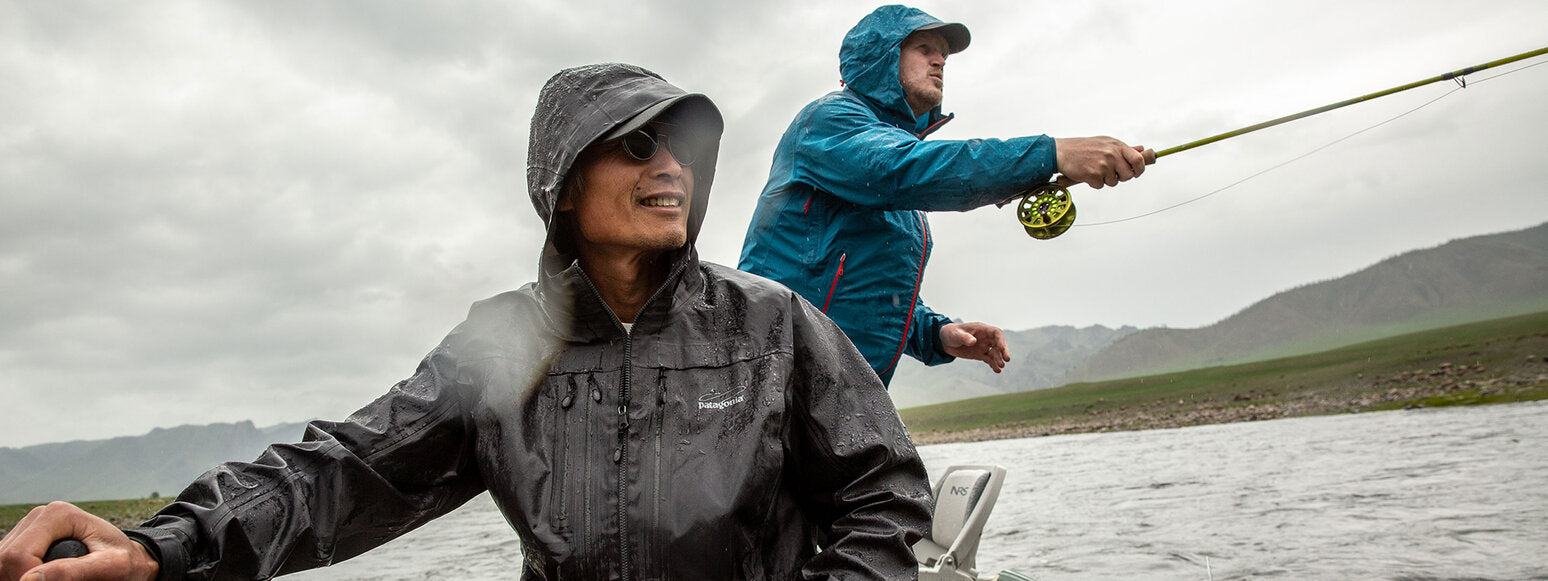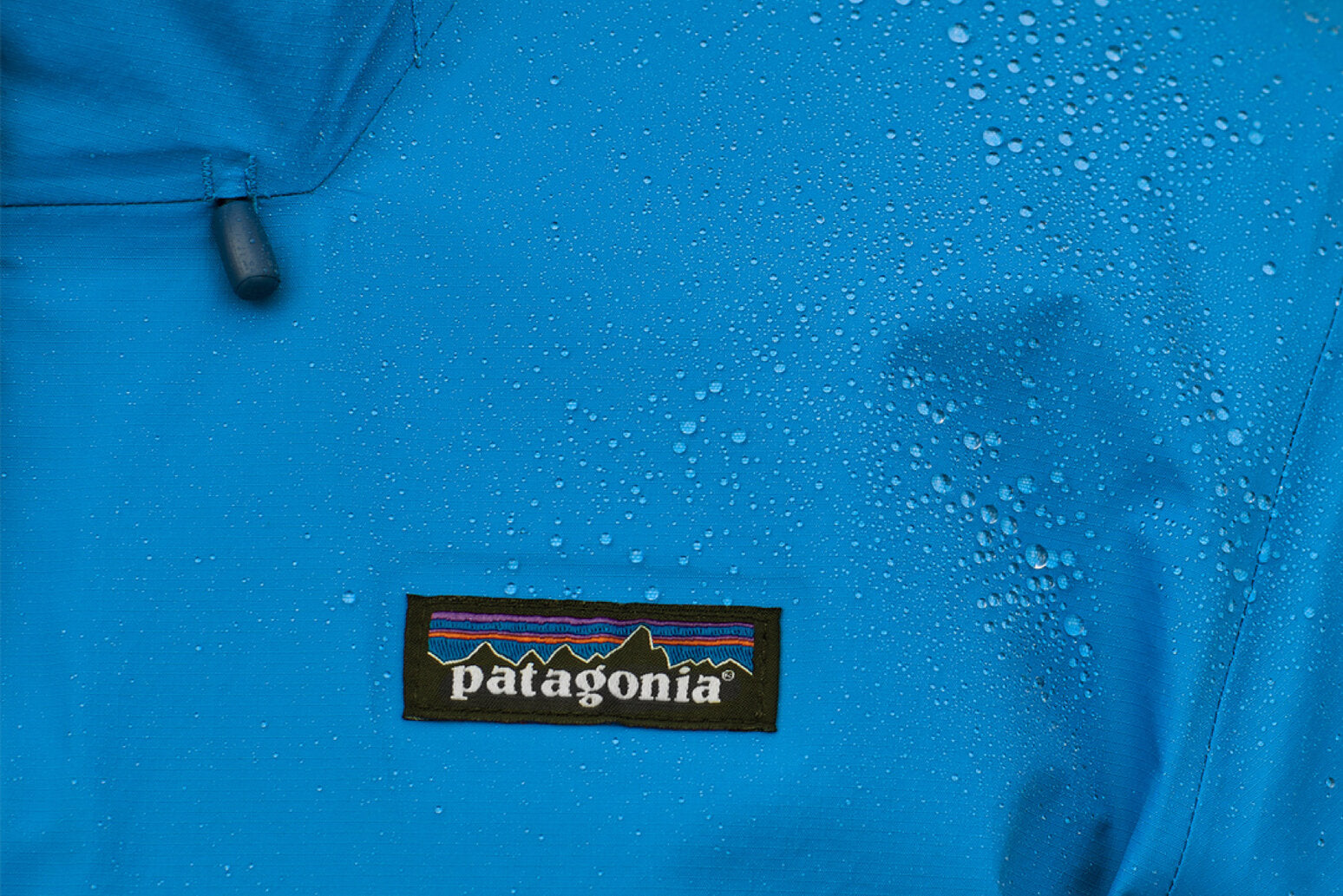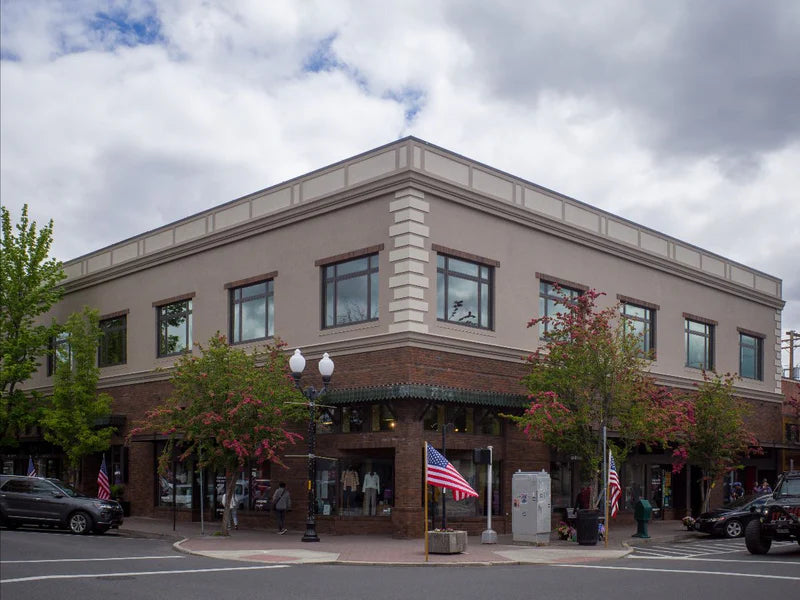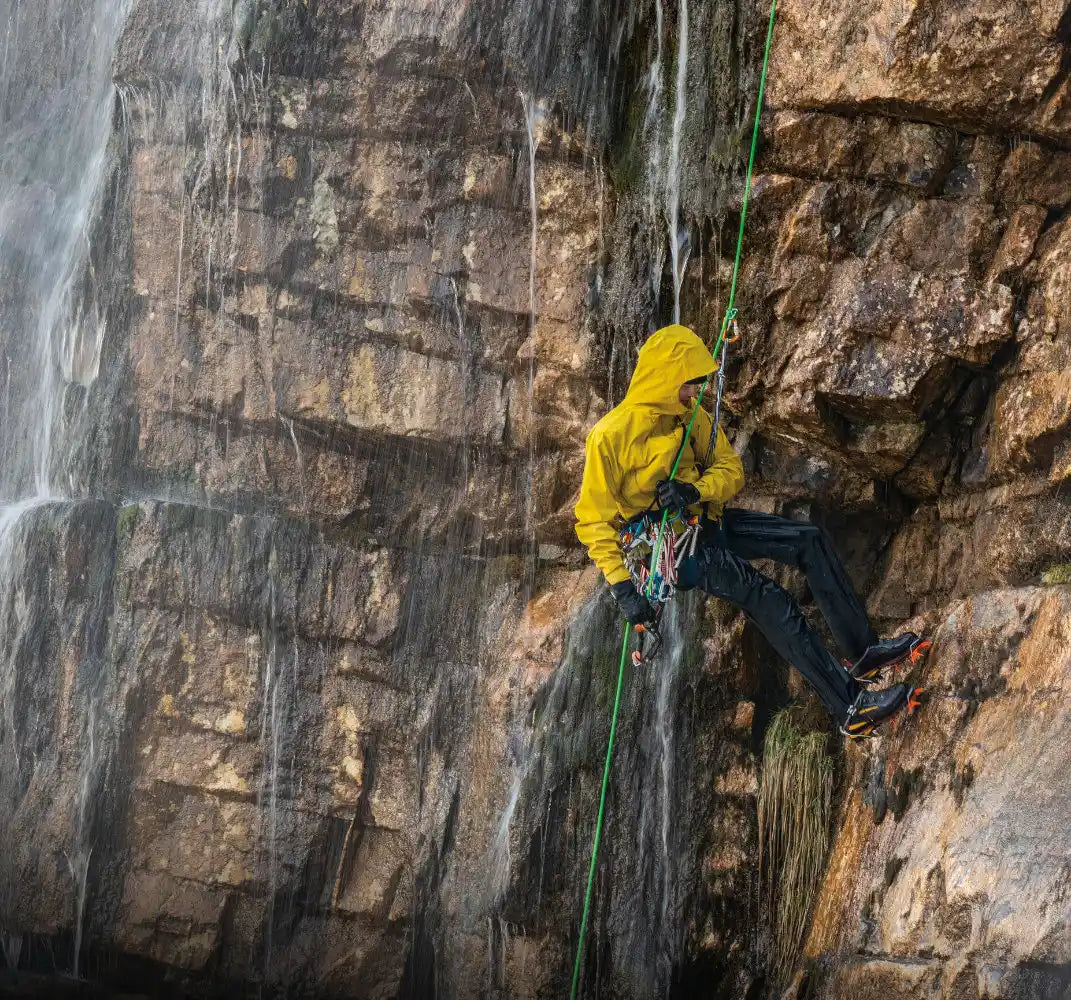Fluorinated DWR
garments dry but contain environmentally harmful components.
Why?
Patagonia's durable water repellent (DWR) finish is a coating that is added to the fabric of our waterproof/weatherproof garments to help moisture bead up and roll off the outer surface. This finish prevents the fabric from becoming soaked from the outside and prevents you from becoming cold, clammy or wet, which could be life-threatening in extreme conditions.
Where We Are
Fluorinated DWR finish is a functional chemical coating containing PFCs (short for perfluorocarbons) that the outdoor industry has long relied on to make garments water-resistant. But, they’re nonbiodegradable chemicals with an environmental cost. PFCs are extremely effective at repelling water, but because of their impact, we are in the process of making all of our membranes and water-repellent finishes without PFCs or PFAS by 2025. (PFAS, which stands for per- and polyfluoroalkyl substances, is the latest terminology to encompass this wide class of chemicals. Patagonia uses the more recognizable “PFC-free,” but for our collection, if your water-repellent finishes and membranes are made without PFCs, they’re also made without PFAS, PFOS and PFOAs.
What’s Next
By Spring 2024, about 96% of the weather- and waterproof fabrics by weight that include DWR membranes and finishes will be made without PFAS. For critical DWR applications, like a rain jacket you’d wear for 24 hours, they don’t yet have a DWR solution that meets the functional needs of these garments. But the brightest chemists are helping them find a solution for those remaining products.










